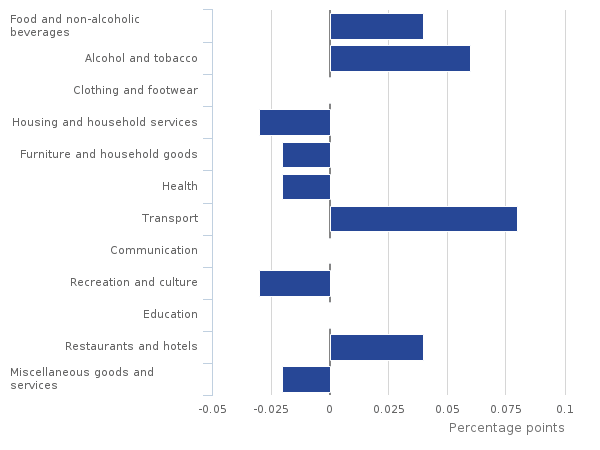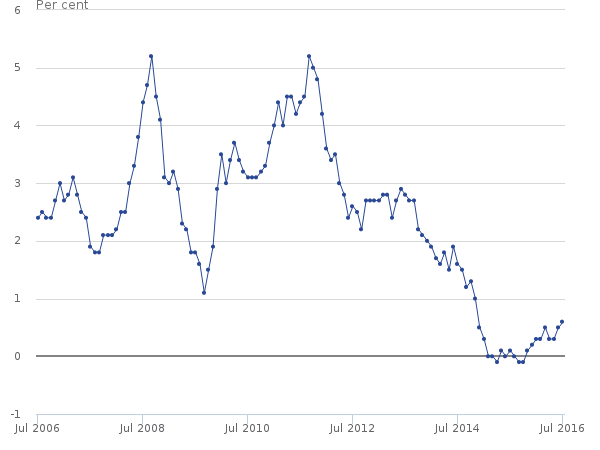Retail Economics Response - ONS Consumer Price Index July 2016
The Consumer Prices Index (CPI) rose to 0.6 per cent in July after a 0.5 per cent rise in the previous month. This is the highest seen since November 2014, although inflation remains low in a historical context. The main contributors to the increase in the rate were rising prices for motor fuels, alcoholic beverages and accommodation services, and a smaller fall in food prices than a year ago. These upward pressures were partially offset by falls in social housing rent, and falling prices for certain games and toys.
Chart 1 - Contributions to the change in the annual rate of CPI, July 2016
Source: ONSTransport: prices, overall, rose by 1.6 per cent between June and July this year, compared with a rise of 1.2 per cent between the same 2 months a year ago. The largest upward effect came from motor fuels, with prices rising between June and July 2016, having fallen overall between the same two months last year. Alcoholic beverages and tobacco: the upward contribution came from alcoholic beverages, for which prices rose overall by 0.5 per cent between June and July 2016, compared with a fall of 2.5 per cent between the same two months last year. This was primarily due to prices for wine, which fell by less than they did a year ago, although it is important to note that last year’s fall was particularly large.Restaurants and hotels: prices, overall, rose by 0.4 per cent, compared with a smaller rise of 0.1 per cent a year ago. The main upward contribution came from accommodation services, in particular overnight hotel stays, for which prices rose by more than they did a year ago.Food and non-alcoholic beverages: the upward contribution came from food, for which prices, overall, fell by 0.2 per cent between June and July this year compared with a larger fall of 0.7 per cent between the same two months a year ago.The main downward contributions to the change in the CPI 12-month rate between June and July 2016 came from the following groups:Housing, water, electricity, gas and other fuels: prices, overall, were unchanged between June and July this year, having risen by 0.3 per cent between the same two months a year ago. The downward effect came from housing rental, specifically Registered Social Landlord (RSL) rents, which saw a decrease between June and July 2016, having increased between the same two months last year. This may relate to the announcement in the Summer Budget 2015, which committed to reducing social housing rental prices by 1 per cent per year for four years, starting in 2016.Recreation and culture: prices, overall, decreased by 0.1 per cent this year compared with an increase of 0.2 per cent a year ago. The downward effect came primarily from games and toys, particularly computer games and consoles, which fell in price between June and July this year, having risen in the same period last year.
Chart 2: Consumer Price Index
Source: ONS
Back to Retail Economic News